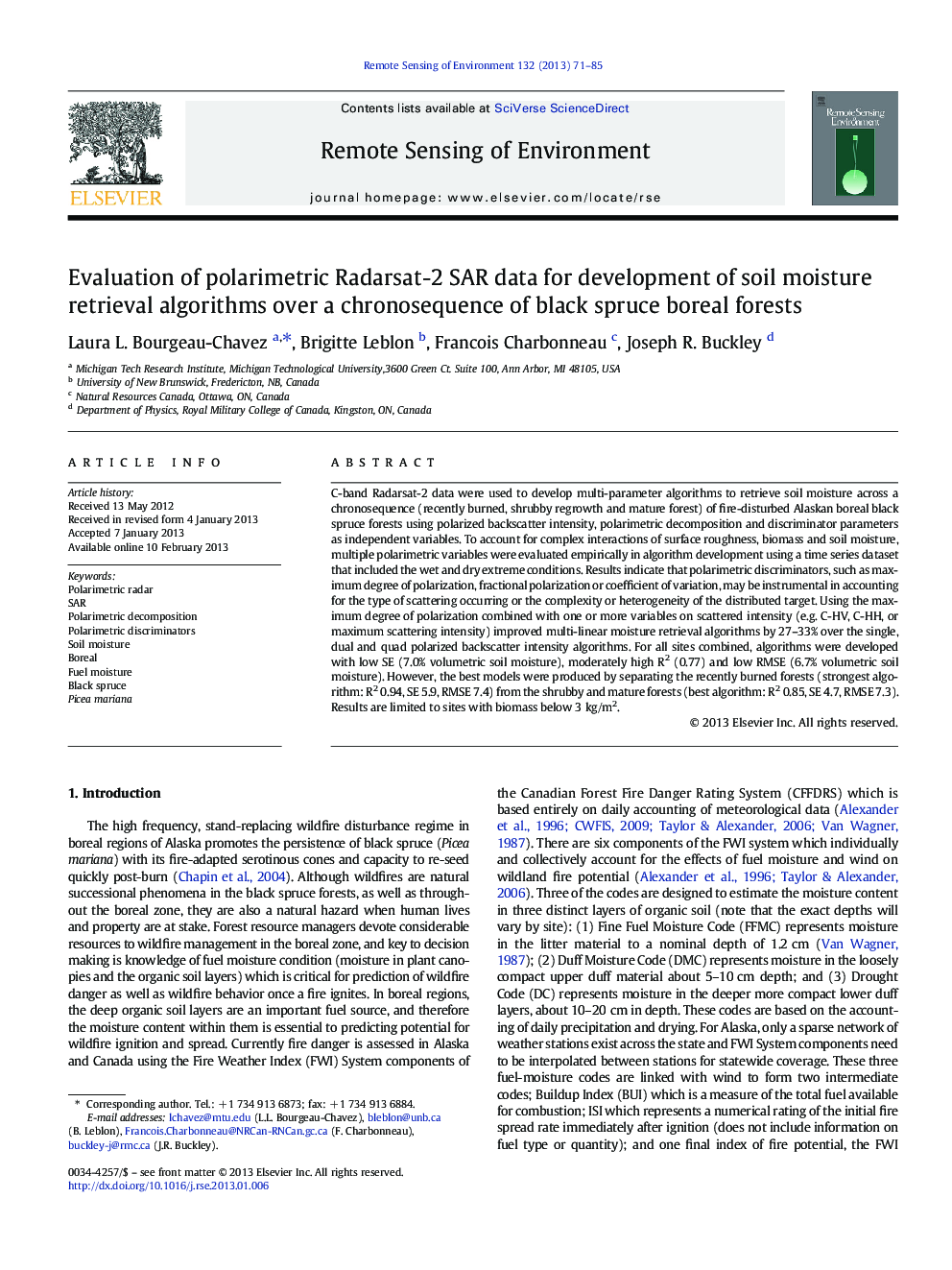| Article ID | Journal | Published Year | Pages | File Type |
|---|---|---|---|---|
| 4458913 | Remote Sensing of Environment | 2013 | 15 Pages |
C-band Radarsat-2 data were used to develop multi-parameter algorithms to retrieve soil moisture across a chronosequence (recently burned, shrubby regrowth and mature forest) of fire-disturbed Alaskan boreal black spruce forests using polarized backscatter intensity, polarimetric decomposition and discriminator parameters as independent variables. To account for complex interactions of surface roughness, biomass and soil moisture, multiple polarimetric variables were evaluated empirically in algorithm development using a time series dataset that included the wet and dry extreme conditions. Results indicate that polarimetric discriminators, such as maximum degree of polarization, fractional polarization or coefficient of variation, may be instrumental in accounting for the type of scattering occurring or the complexity or heterogeneity of the distributed target. Using the maximum degree of polarization combined with one or more variables on scattered intensity (e.g. C-HV, C-HH, or maximum scattering intensity) improved multi-linear moisture retrieval algorithms by 27–33% over the single, dual and quad polarized backscatter intensity algorithms. For all sites combined, algorithms were developed with low SE (7.0% volumetric soil moisture), moderately high R2 (0.77) and low RMSE (6.7% volumetric soil moisture). However, the best models were produced by separating the recently burned forests (strongest algorithm: R2 0.94, SE 5.9, RMSE 7.4) from the shrubby and mature forests (best algorithm: R2 0.85, SE 4.7, RMSE 7.3). Results are limited to sites with biomass below 3 kg/m2.
► Radar polarimetry is investigated to improve soil moisture estimation algorithms. ► Focus is on a chronosequence of recently burned to mature black spruce forests. ► Moisture from dry, moderate and wet conditions is captured in the seasonal dataset. ► Optimal models developed included the maximum degree of polarization discriminator. ► Models show polarimetric discriminators improve moisture prediction by 27–33%.
